Saturday 1 July 2023
It was a lot of fuss loading my bicycle onto the early train out of King’s Cross but at least journey up to the northern extremity of England at Berwick was achieved without mishap by before noon. I navigated through the busy border town and across the Tweed on the ancient stone bridge giving a fine view over the sturdy stone warehouses and wharves of the old harbour.

It was a long climb up but I was pleased to be able to find a way out into the countryside without having to follow the busy A1. Although this was the first day of July there was a sharp west wind slowing me down and several times when I took my trusty little map out of my pocket to check a turning it was blown right out of my hands. Once I had to climb over a hedgerow and into a grassy field to retrieve the map. My route took me for a few miles along the old road taken by pilgrims on their way to the shrine of St Cuthbert at Lindisfarne and I had lovely views out across the sound to the eerie shape of Lindisfarne Castle sitting fiercely on top of its rock as a warning to Viking raiders.

Soon I was skirting happily along the coast past lovely resorts like Bamburgh, Seahouses and Beadnell. Bamburgh proudly proclaims itself as the former capital of the Saxon kingdom of Northumbria. The little town shelters under another vast castle.

It was a pleasure cycling along the grassy duneland of this unspoiled section of the Northumberland coast but soon I had to cut into the strong east wind to head inland toward my first day’s destination at Alnwick, the feudal seat of the Percy family who held these northern fastnesses against the Scots. It is a sturdy, stone-built market town and a good stopping point after a long day covering a good 50 miles in quite adverse conditions. I found the excellent Youth Hostel, housed in an old Victorian courthouse and set off in search of sustenance. I was tired after my exertions of the day and slept remarkably well despite a life-time aversion to sleeping in dormitories with strangers deriving from the years I spent in boarding schools. The night passed without undue snoring or farting from my room-mates.
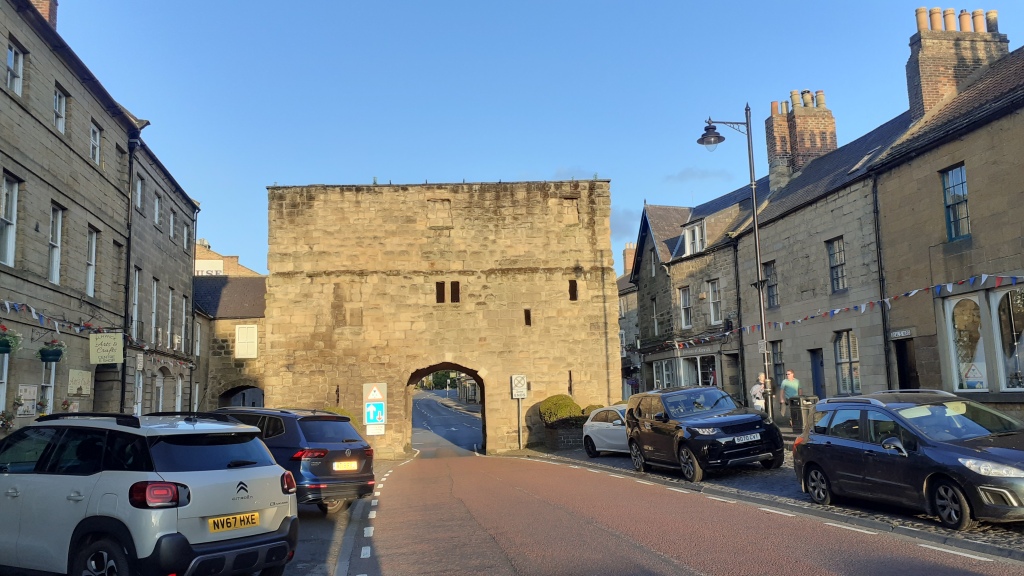
This is where Scottish sheep raiders were locked up.
The next day dawned bright and clear and after a great breakfast I cycled the short distance down to the shore at Alnmouth, a lovely coastal harbour with fresh breezes blowing off the sea across the grassy dunes.

Cheating I took a train to cut out 20 miles across rolling rural Northumberland stealing views over fields and woods down to the empty coast. This is a truly lovely part of the country. I stopped at Morpeth and resumed my pedaling as far as the former shipbuilding and mining port of Blyth. Its economy is being regenerated through wind farming, mostly offshore. Blyth was once an important naval dockyard building aircraft carriers and warships until the 1960s.

The rest of the ride along the shore to Whitley Bay for my second night was a delight. I stayed in an excellent bed and breakfast right on the huge grassy sward leading down to the sea. Whitley Bay is recovering some of the pride that it once had as the major resort on this stretch of coast greeting as many a 50,000 Clydesiders every summer who decamped here during their wakes weeks while the machines in their factories and workshops were being serviced. The Hollywood style Art Deco Spanish City has been lovingly restored and is now a major attraction.

and you can just imagine the Glaswegian crowds arriving off their trains being greeted by this mosaic promoting the joys of a family holiday by the sea:-

A short metro ride took me to North Shields to look at the mighty Tyne with its mass of shipyards, warehouses, depots, sailors’ hostels and factories. A ship bound for Amsterdam sailed by as I made my way back along the shore.
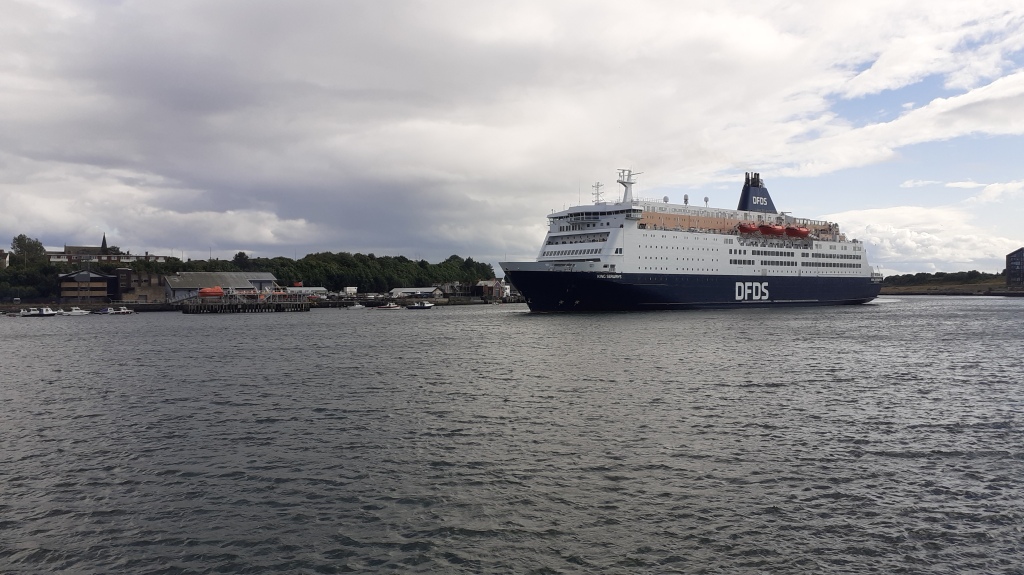
The walk back was delightful, passing lighthouses and watchtowers, monuments to great naval heroes and the fishermen of the Tyne. The Roman wall ends just a couple of miles further inland at the point where the Tyne had become wide enough to deter any Pictish invader from crossing but at Tynemouth they placed yet another sturdy fortress perhaps to defend against Saxon pirates. The fort was reinforced for protection against Danish invaders and to safeguard the priory.
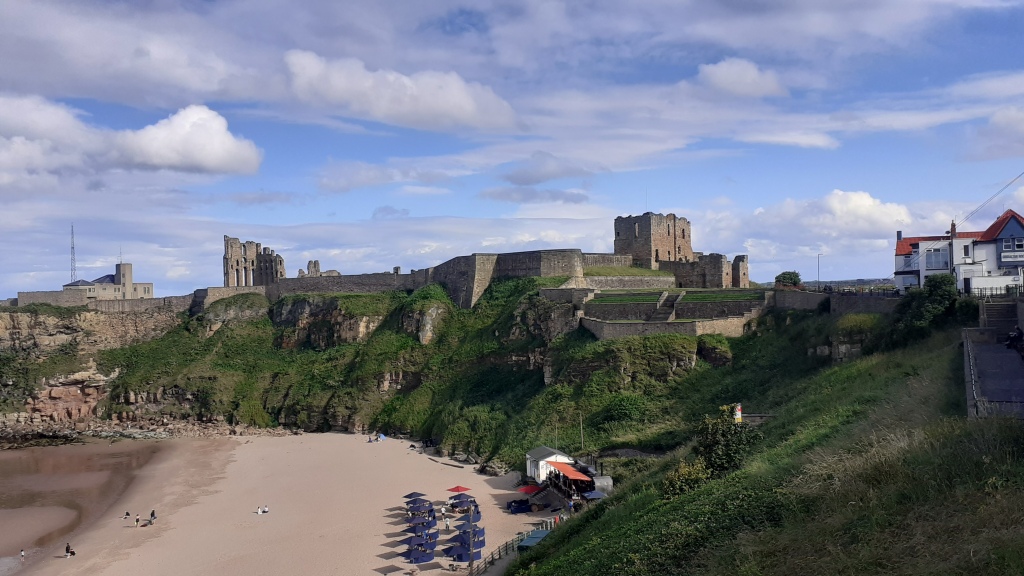
The next day I happily crossed the Tyne on a little passenger ferry to North Shields with great views of the great complex of industries, both derelict and modern, that cluster along the river. For the most part the early section of the day’s ride was along a stretch of coast decked out as a vast pleasure ground or alternatively as a giant golf course with long stretches of neatly mown grass. There was a nice beach at Roker Park and then a climb up to cross the high bridge over the Wear at Sunderland.
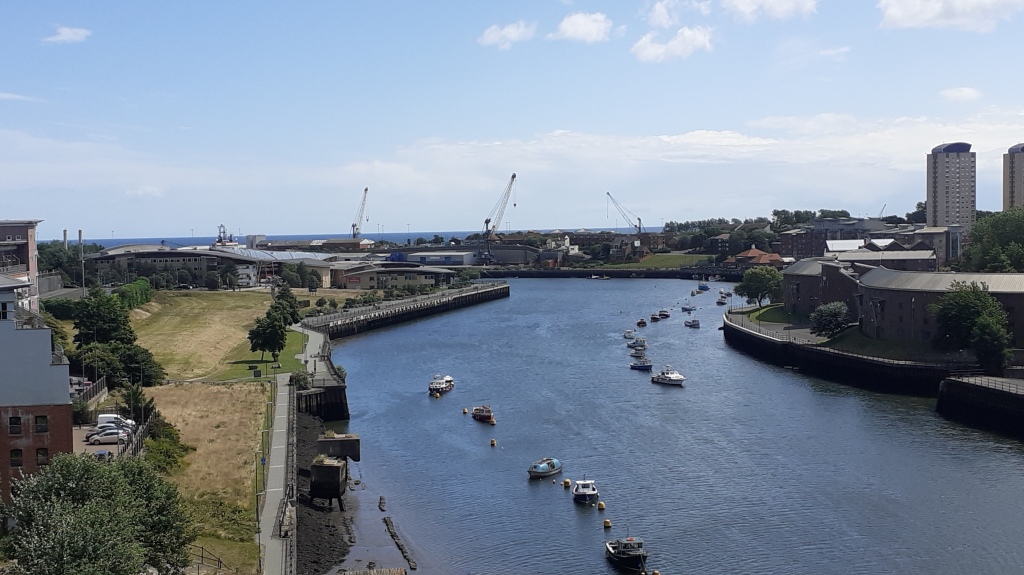
After this there is an area of disused factories which I managed to negotiate my way through successfully. The huge Nissan Motor works are just a few miles inland from this dereliction. A few miles further along I reached the former seacoal seams of the Durham mines. For centuries this area sent huge quantities of coal down the coast to heat London and the mines often stretched far out under the seabed. After a lot of hard up and down riding I finally reached Easington. That is a historic town with a medieval parish church. Easington Colliery down by the shore is the town which developed to accommodate the miners and their families who worked there. It is a community which is now almost wholly boarded up and closed down. As I cycled down the long slope I did pass a fairly hostile looking group of youths staring at me as I passed. I can imagine why they might resent outsiders coming to gape here.
The colliery ran from 1899 to 1993 and was the last of the Durham mines to close down. It had tunnels that ran up to 6 km under the seabed. The mine’s physical manifestations have vanished and most of the site is now a nature reserve. All that remains is the former Pay Office which has been converted into a community café run by volunteers and a rehearsal room for the Easington Colliery Brass Band, one of the best of its kind in the country. I left my bike propped up to the wall and went inside to have a look and within seconds a car drove up and the woman inside said: “Don’t leave it there pet! It’ll get stolen. Take it inside.” I had a sausage sandwich and a cup of tea and chatted to the ladies about the colliery band. They also told me about the explosion which killed 83 miners altogether in 1951.

I cycled on and was relieved to reach Hartlepool and pass on to Seaton Carew where I stayed in a solid and substantial Edwardian hotel with fine views towards the Cleveland hills across the Tees. It had been a long day.
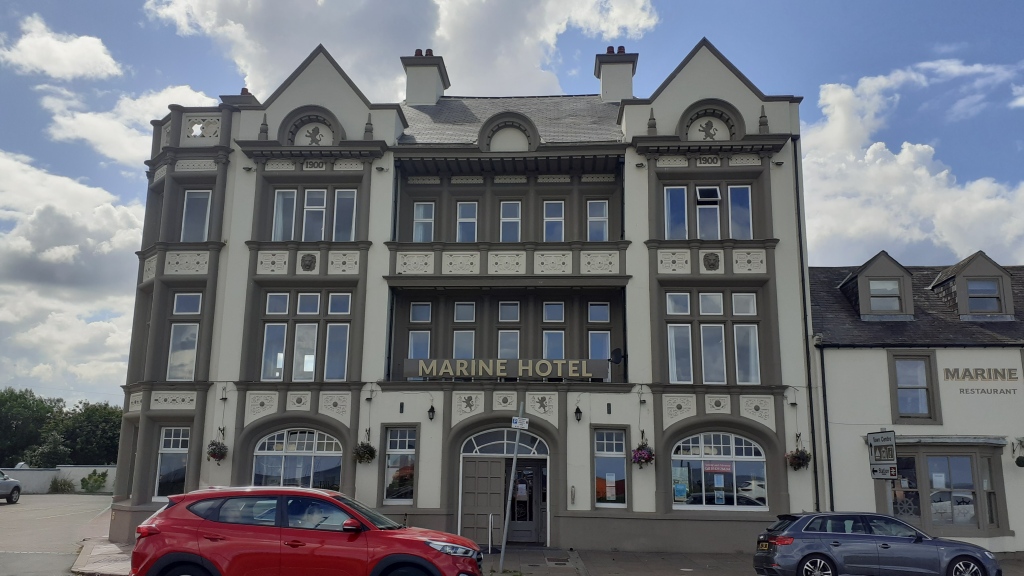
The next morning I set off happily across the flat estuarine marshes near the Tees towards the mighty Transporter Bridge at Port Clarence. Sadly it had been under repair for several years now a task which looks as though it will never be completed. I had to ride on several miles to find the bridge over the Tees to take me into Middlesbrough.
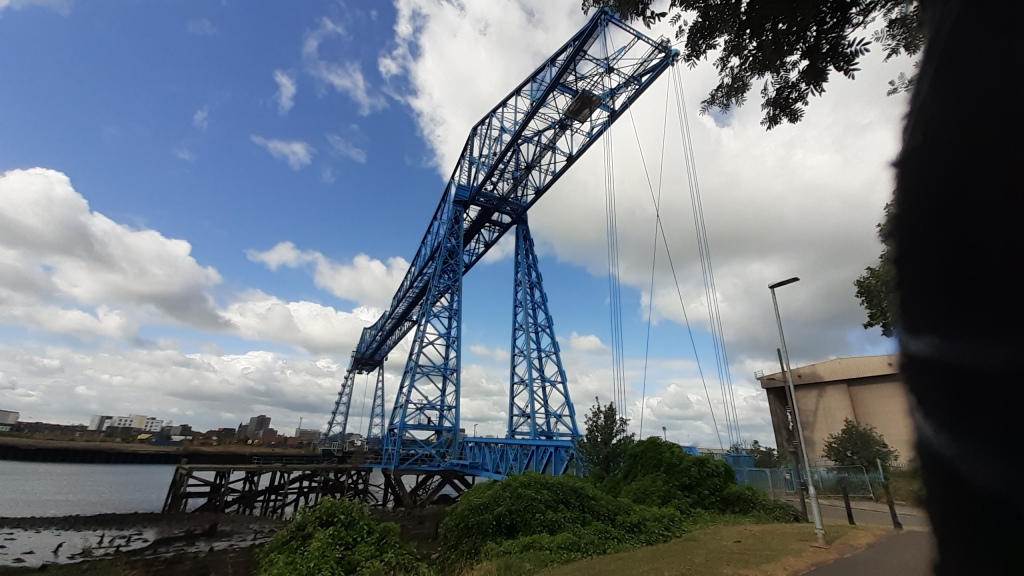
After a short distance along a riverside path there followed a very long ride through an intensely industrial and post-industrial landscape. The Stadium of Light, home to a Premiership football club, was positive and glossy but then I had miles along the cycle path at the side of a busy main road. At least I was able to gobble up the distance until I could once again slow down my pace when I reached Redcar on the Cleveland coast and was standing at the foot of the hills I had seen from Seaton Carew the evening before.
The next few miles were along gentle coastline with small agreeable holiday towns before some steep and long climbs with a particularly long one after Saltburn where I had to push the bike uphill for more than one km. However climbs offer rewards and soon I was sweeping down towards the delightful town of Staithes, where the great Captain Cook learnt to be a mariner.

Then a few miles further on after more fairly punishing climbing weighed down with about 10kg of luggage I came to the delightful church at Lythe to look at St Oswald’s church dedicated to the great Anglo-saxon hero and first Christian king of Northumbria. After his savage death at the hands of King Penda of Mercia his body was dismembered. Later on different parts ended up as holy relics in several different shrines across the country.

I had just a few miles along a road that clung so close to the shore that waves were lapping over the wall and sending out great sheaves of spray and finally up into the famous town of Whitby.

Exhausted from my long ride I just wandered happily around the town watching the races of rowers coming up the Esk cheered on by the crowds gathered in the riverside pubs. I was too worn out to explore the eerie ruins of St Hilda’s abbey high above the town or the winding alleys of this old seafaring township but in the late evening I did make my way out to the end of the great piers that stretch out like lobster’s claws to protect fishing boats in the harbour. The view out over the sea towards the hills I had struggled through during the day was splendid. From the end of the pier I caught a glimpse of another group of rowing boats racing across the wide bay. What a wonderful thing to do!



The next morning was glorious. I pushed my bike up the steep winding streets of Whitby to get onto the old railway track that once led to Scarborough across the fields and woodlands of this lovely coast. It is now a cycleway called the Cinder Track and soon out of Whitby it leads across a high Victorian viaduct carrying it over the Esk and another railway clinging far below to the river’s edge. It is a spectacular piece of engineering offering delightful views up to the North Yorkshire moors.
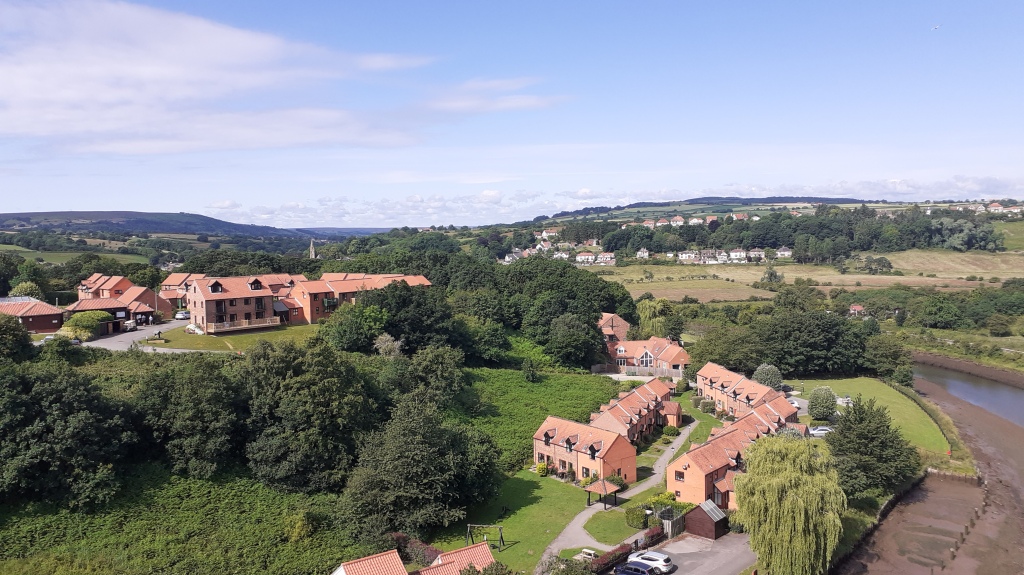

For the next few miles I was as happy as Larry cycling through shady woods and quiet open countryside with glimpses of the outline of Whitby Abbey silhouetted against the horizon and the deep blue of the North Sea in the distance. This was glorious as far as Robin Hood’s Bay where I paused to have a look round. Yorkshire is far from Sherwood Forest but there is apparently a persistent legend that Robin came here and worked on the fishing boats and fought bravely against French pirates capturing their treasure and giving it on to the villagers, a nice but improbable story perhaps. I suppose could argue that the naming the village after a famous outlaw was suitable for a community which for centuries derived income from smuggling.
After Robin Hood’s Bay the line passes through remote country as the ground rises towards Ravenscar. The views are truly spectacular but the track becomes more and more deeply rutted. It was tiring and stressful to ride on and after I reached the beautiful village of Ravenscar some 650 feet above sea level I was exhausted and decided to get off the track and take a nice smooth metaled road down to Scarborough.

At Scarborough my long cycle journey came to an end. Ignoring the attractions of this famous seaside resort I made a beeline for the station and boarded the first train to Bridlington. I had hoped to reach it by bicycle but there I was in no condition to cover the remaining 20 mile distance myself. It was a great relief to let the train take the strain.
Unlike Whitley Bay, Whitby and Scarborough all of which are now attracting crowds of visitors Bridlington, once a thriving seaside resort in Edwardian times, now seems rundown and left behind. The fairground was empty and the harbour, once a shelter for the many coastal coal ships that plied these waters, now much less busy. The huge Pontins Holiday Camp that once stood outside the town was closed some 20 years ago.

There is, however, a wonderful railway station that has been transformed into an impromptu greenhouse to marvelous effect.

I spent the next day in Beverley which boasts two magnificent churches and then went on to Hull. I enjoyed walking around the city which has a great feel of civic pride with a fine Guildhall, City Hall and Art Gallery as well as some imposing Edwardian and Modernist department stores. There are also plenty of fine, well-built naval and maritime structures. Hull remains an important industrial centre and shipping hub standing on the wide Humber. There has been a lot of investment in recent years resulting in some impressive buildings.

I spent the next morning at the beautiful Ferens Gallery before moving on to York for a couple of nights to take part in the family celebrations of my cousin Meg’s 80th birthday, partly held in York and partly at her lovely home in the market town of Easingwold. That is another story.
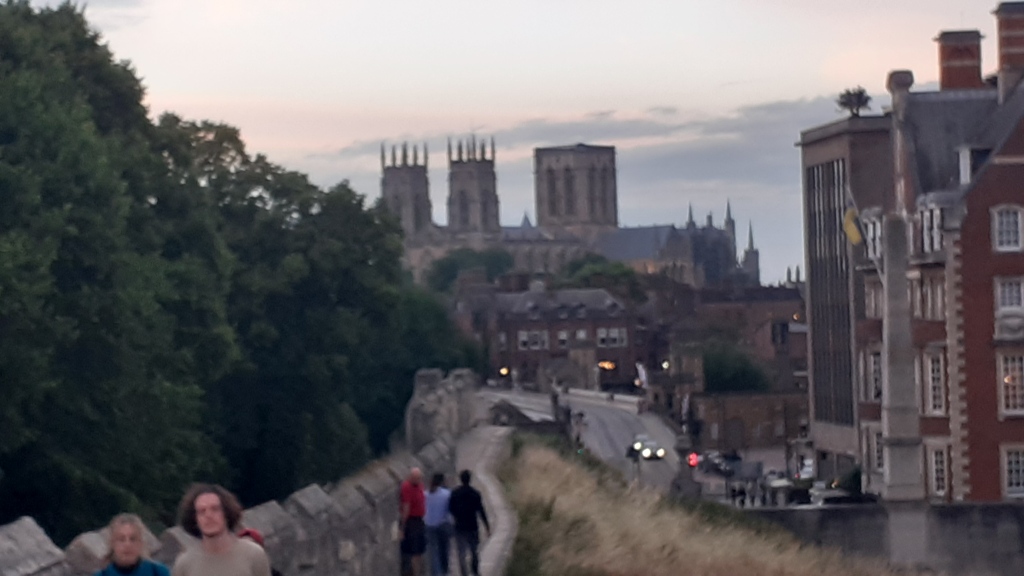
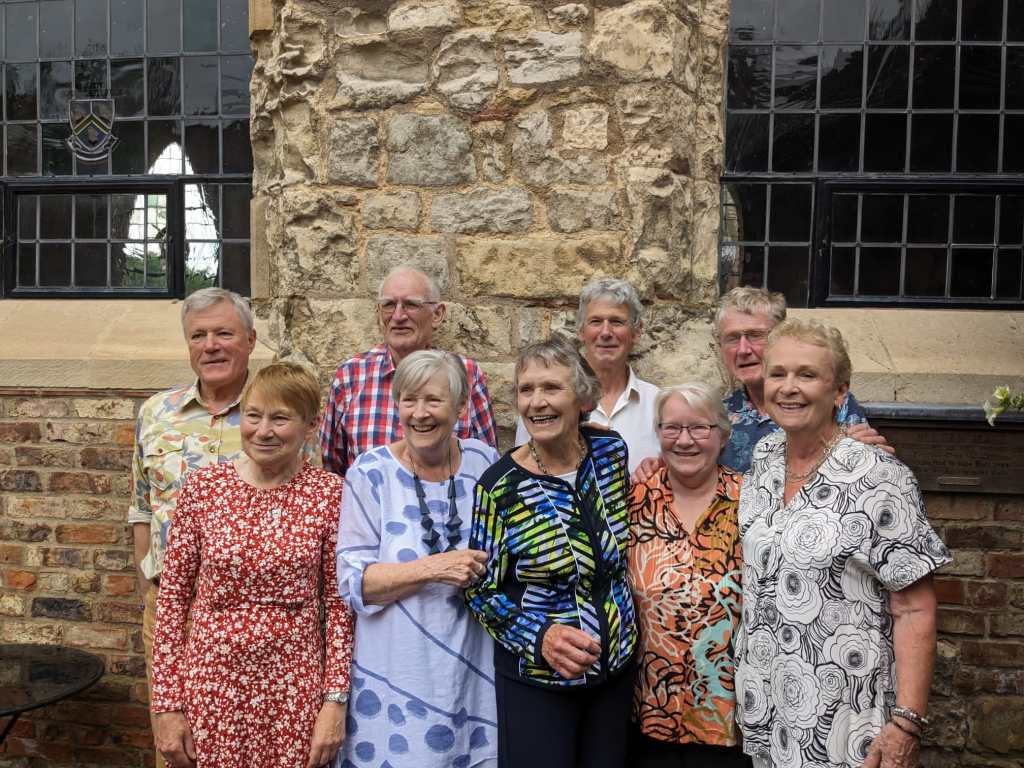

Since returning to London I have for the last few weeks been restricted by a bad ulcer on the sole of my right foot which developed and became badly infected during the ride. I do hope most fervently that this will not spell the end of my days of cycling adventures. Cyclists may seem obsessive. Their passion derives from focusing all their energy on reaching their destination each day. There is no distraction from this goal and all other thoughts and worries fall away.
Hi Richard,
A very late note just to say how much I enjoyed this post. I had been intending to talk to you about your trip at a CTGA meeting, but I haven’t managed to make it to any meetings in the last few months. I will try harder next year!
I was re-reading it this morning and remembering all the times I have been to these places. My father was brought up in Whitley Bay and I recently – well, 2018 – walked St Cuthbert’s Way, finishing by walking across the sands at low tide to Lindisfarne. I still have family in Hartlepool and visited there just last week – here my memories are of the heavy industry that once stretched for miles along the coast.
The stretch south from Hartlepool has memories for me of family visits to Hartlepool each summer, always using the wonderful Transporter bridge, but south of that I know not at all! Last summer I walked the first half of the Coast to Coast path and had intended to finish the walk and visit Whitby this year, but heart issues intervened. Maybe next year …
Lovely photos and happy memories for me. I hope that your foot healed long ago and that you are once again a happy cyclist!
With all best wishes for the festive season, Jenni
LikeLike
Thanks Jenni. I’m so glad you enjoyed this. I haven’t been on my bike since I got back but finally after a long few months the hideous ulcer on my foot has finally healed up.
I hope all is well. I was very impressed by the Lambeth Women book. Well done.
Richard
PS I am off to Malaysia tomorrow morning!
LikeLike